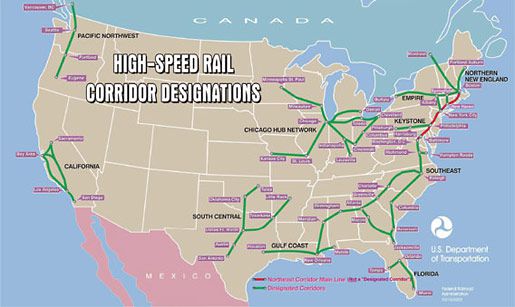
The Obama administration’s announcement of $8 billion for high-speed rail development around the country certainly made a splash, but it’s not going to put many new trains on new tracks in the near-term. It’s hard enough to build a baseball stadium for less than a billion dollars these days.
Here, we’re talking about spreading $8 billion around to 10 rail corridors across the country, plus an additional $1 billion a year for 5 years.
While we can admire the rail-centric Europeans or the sleek bullet trains of Japan, is it worth trying to shift the primary mode of transportation for a significant number of Americans?
Amtrak’s Empire Builder runs between the Twin Cities and Chicago. It’ll cost you $56-74 and take you 8 hours to get there.
If you’re a frequent traveler to Chicago, what’s the threshold at which you’ll consider switching from plane to train? A 6-hour trip? 4 hours?
Update: In the comments, Tyler notes that the point of this all is that it’s high-speed rail.
However, the U.S. actually has different standards for what qualifies as high-speed rail than the European Union, for example. The EU says it’s a top speed of 125 mph or more, while 90 mph will earn you the status of “Emerging High-Speed Rail” in the U.S. — or, for the politically expedient, “high-speed rail”.
For the interested, the Federal Railroad Administration’s high-speed rail strategic plan (pdf) is worth a read.
